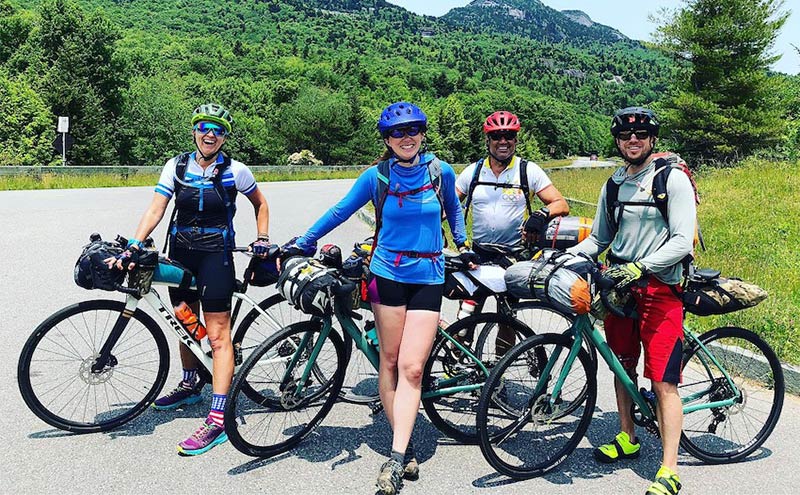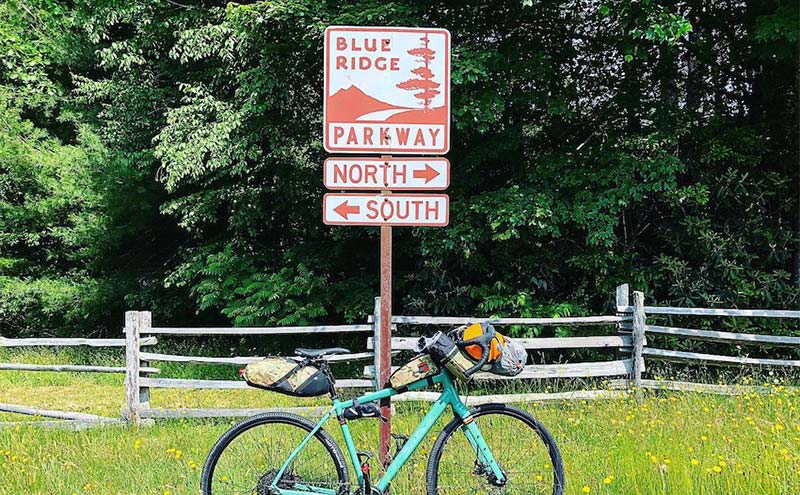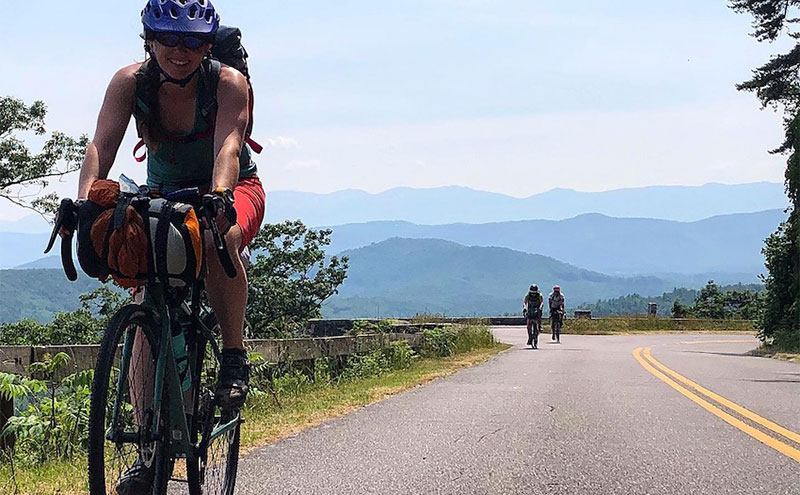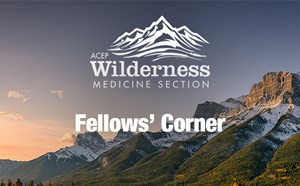
Bike Packing 101: The Blue Ridge Parkway
A couple of months ago, in June, our fellowship program set out to bikepack a portion of The Blue Ridge Parkway in the Southern Appalachian Mountains. The Blue Ridge Parkway is a National Parkway and an All-American Road in the United States that is noted for its gorgeous landscape and natural beauty. The Parkway runs 469 miles through 29 Virginia and North Carolina counties along the backbone of the Blue Ridge, which is a great part of the Appalachian Mountains. The Blue Ridge Parkway links Shenandoah National Park to Great Smoky Mountains National Park and is America’s longest linear park. The land on both sides of the road is owned and maintained by the National Park Service. If anyone has spent any time on The Parkway, you will surely agree that this is a beautiful place to adventure. Although it may often be preferred to be outside a vehicle, the views are stunning whether you are in a car, on a bike, hiking or camping.

Christina Merryman is our most recent MCG WM Fellow graduate, completing her fellowship this past summer. She is a nurse practitioner and our first Advanced Practice Provider fellow. Christina created a bikepacking adventure on the Blue Ridge Parkway as her Fellowship Capstone Expedition, a project designed to have fellows independently plan and enact an adventure trip, while under faculty supervision (with WM simulations & “what if” questions along the way). This was a huge success and all of us survived our first bikepacking experience.
Our adventure was 4 days in length and we averaged about 15 miles a day. The 4 members of our party stayed at various campgrounds along the way, not arriving into our first campsite until about 11pm on day 1. Although not part of our initial plan, our late start afforded us some beautiful nighttime bike riding along The Parkway while witnessing the magic of the NC fireflies. The millions of twinkling fireflies was something I’ve never seen before…unreal! Given the fact that we camped along the way, we had to remember that we not only needed food, electrolytes, clothing and gear, and essential toiletries but also camping gear. This made it very important to have lightweight gear for our ride. We used bike-packing gear that attaches to the bike itself. There are multiple ways to travel with your gear while bikepacking, like pulling a small trailer behind your bike, but this is what we used and it worked surprisingly well. I did not do much training for this trip, and it proved to be challenging given the time spent on the saddle and although we were on a paved road, we did have significant elevation changes on The Parkway. The downhills were amazing, but as you know, any downhill will inevitably lead to a subsequent uphill. The more fun the downhill, the more scared we were of the impending uphill. But, we made it.
We started our bike trip at the Craggy Gardens Visitor Center at Milepost 364, had a car there and a car at the finish. We set up our gear and completed the finishing touches on squaring our bikepacking gear on our bikes and headed out. Our goal was to get on the road biking by around 2p but true to real-life and last-minute challenges, we didn’t get started until about 6p that day; thankfully the weather was glorious and behaved in our favor. We rode about 25 miles on day 1, passing by Mt. Mitchell and ended up at our campground at Crabtree Falls around 11p. This was not only the most miles in the shortest time, but there was a large portion that was downhill. The misadventure for the day was a flat tire about midway through the ride by one of our participants (I won’t say any names, haha.) Two of us had already started downhill and by the time we stopped to wait on the other 2 members of our group, we waited and waited and waited. At this point we got concerned and started back uphill. As we all know, hindsight in 20/20 and we shouldn’t have gotten so far ahead on that glorious downhill, but it’s a lesson learned.

We started uphill and made it a couple of miles before a car passed and we asked if there was anyone hurt on a bicycle that they had passed. They informed us it looked like they were working on repairing a flat. This was great news as we thought obviously thought the worst and that someone had gotten hurt. We then sat down to rest and have a snack. About an hour later our group was reunited and we finished our ride into the campground in the dark. But as I said before, the fireflies were a highlight so I think we won that toss-up. Setting up camp and heating water for dinner in the dark is certainly harder than in daylight, but we managed and fell fast asleep. Without a headlamp, this trip wouldn’t be possible, so make sure you have not only one, but also a backup, or at least batteries. Each campground had potable water, so we just needed capacity to last the entire day on the bike. We carried at least 3L of water daily, all of us had a bladder with water which is easier to drink while biking. We did however have a method for water detoxification in the event of an emergency. Day 2 we rode ups and downs to Linville Falls Campground which was a distance of about 24 miles, and onward to Day 3 with 19 miles to Julian Price Memorial Park near Grandfather Mountain. At most of the campgrounds we had reservations (where they could be reserved) as this is another important pearl to remember when planning an adventure like this. We completed our trip the following day, and it turned out perfectly as this was the only day we saw rain. Luckily, we were off the bikes by the time the rain came down. Our weather for most of the trip was what I’d call perfect, with highs in the upper 70s F and lows in the 50s F.
We really enjoyed the bikepacking adventure and plan to have another go at it in the spring. For anyone who is really experienced with bikepacking, I’d love any tips you have! And if you are in the novice boat and have never had a go at bikepacking, I recommend going outside of your comfort zone and giving it a try, you won’t be disappointed. Thankfully we had no medical emergencies but I’d like to chock that up to being prepared and warding off evil spirits! A few checklist items below for Bikepacking 101.
Happy riding!
- Know your location, know your weather.
- Don’t rely on technology, have a paper map at hand.
- Have a gear list, check it not twice, but three times.
- Use a bike you know, or make sure you get fitted for one and it is in fact, comfortable.
- Have an evacuation plan for medical emergencies, know the area and the EMS services, rescue services available and the closest center of definitive care.
- Be prepared for a flat tire, or two, have a sufficient tool kit for mechanical mishaps.
- Make sure everyone has a personal medical kit.
- Don’t forget foot care, and personal medications.
- Have a nutrition and hydration plan.
- Know your group, know any medical problems and allergies. Be prepared.
- Bring your headlamp - no wait, bring two!
- Be prepared for rain and any inclement weather; bring rain gear
- Each bike also needs a white headlamp and a red reflector/taillight which is important for safety at night and also for tunnels on the Parkway (know local rules).
- Have a blast and don’t take photos while riding the bike! (Look ma, no hands!)
Taylor Haston, DO, FACEP, DiMM, MBS, MPH



